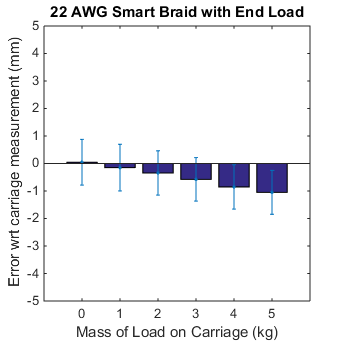Testing
From Contraction Sensing with Smart Braid McKibben Muscles (2015): "We tested the actuator in a custom-made test apparatus in which we applied different pressures and loads while measuring both inductance and the ground truth actuator contraction. Pressure control was achieved with a custom feedback loop driven by a proportional valve (Enfield LS-V05s) and a pressure transducer (WIKA A-10). Contraction of the actuator was measured from the motion of a sliding carriage affixed to the actuator end. A string potentiometer was used to measure the position of the carriage (UniMeasure LX-PA, 10" range)."
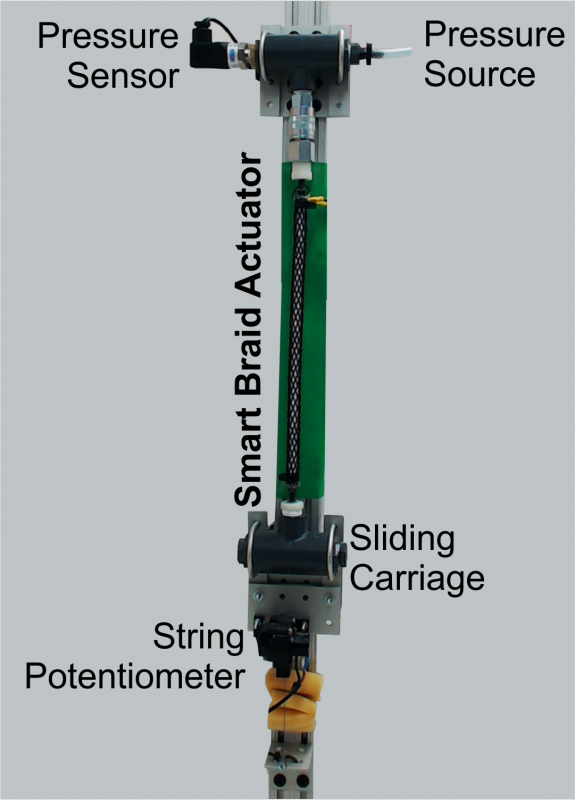
Contraction Sensing
The actuator built with the 30 cm Smart Braid was able to contract 5.7 cm . A linear calibration is sufficient to use the inductance measurements to predict the actuator contraction. The contraction was able to measured within about a milimeter. The sensor response was tested with a sinusoidal pressure signal up to 4 Hz and could not find any evidence of performance degradation.
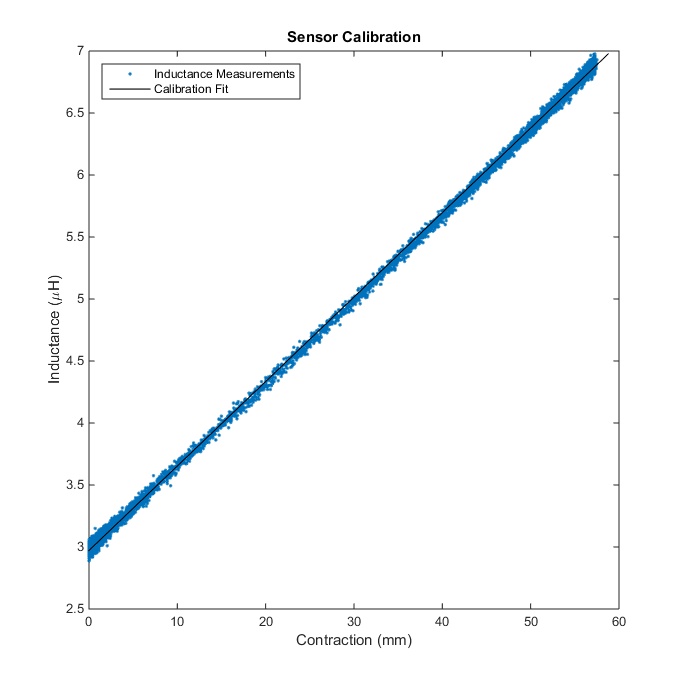
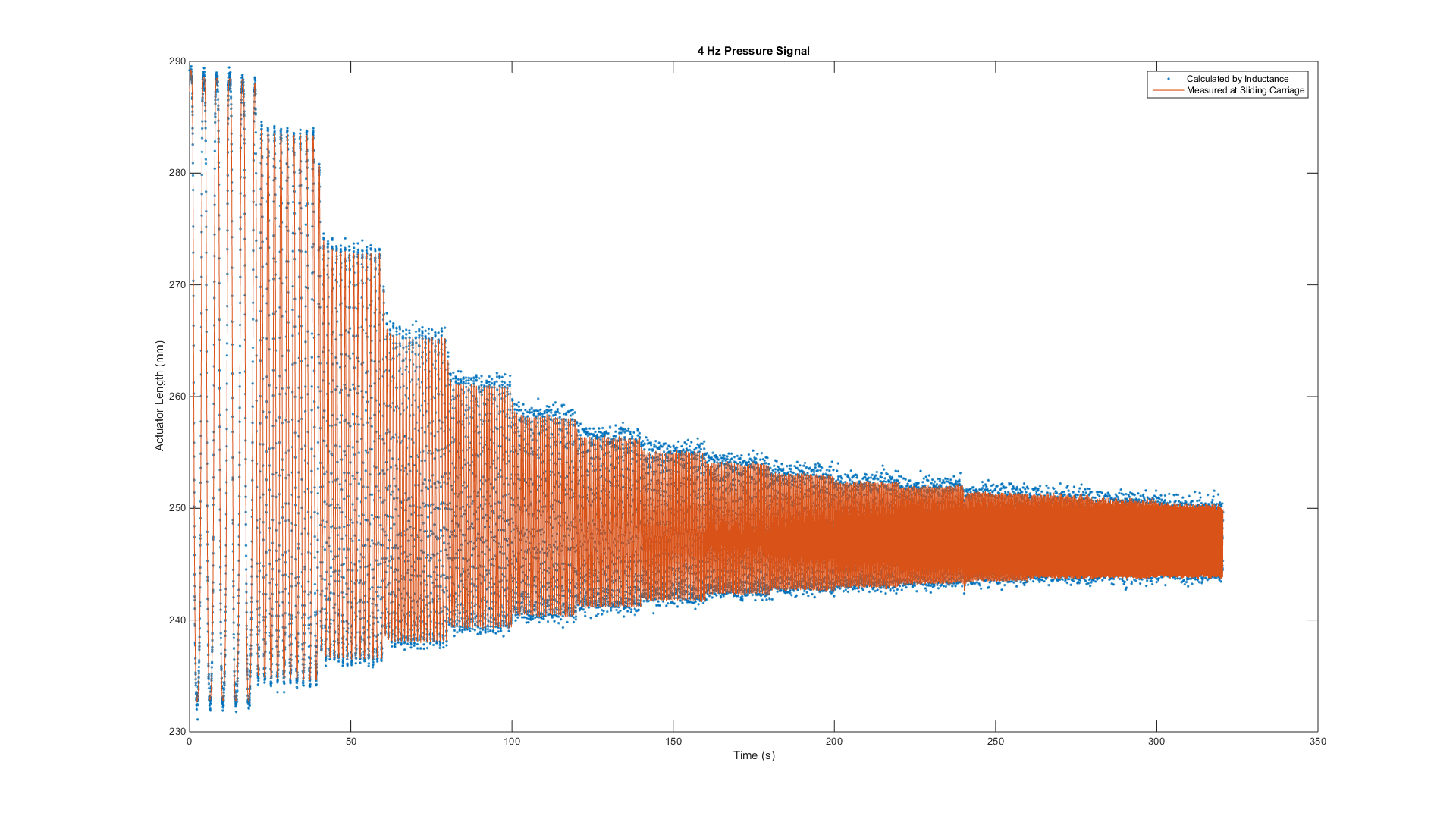
Force Sensing
The wires of the 22 AWG Smart Braid were too thick to to have any sensitivity to force. Our pilot work for these devices, however, demonstrated that using thinner wires allows one to characterize the force through resistance (see figure 1). In that work, stretching in the test fixture gave the illusion that the inductance was also sensitive to force. This effect became more clear when we tested the 22 AWG Smart Braid on a stiffer test fixture (see figure 2). The stretching in the fixture causes the length of the actuator measured by the inductance and the length as measured on the fixture to diverge slightly under heavy loads.
Thin wires must be used if one desires to have a system sensitive to force. It may be necessary to increase the total number of wires used to prevent the stress on any one wire from being too great. As one increases the number of thin wires used in the circuit, the resistance also increases. One must use care to ensure that the high resistance does not prevent the inductance from being measured.
Figure 1
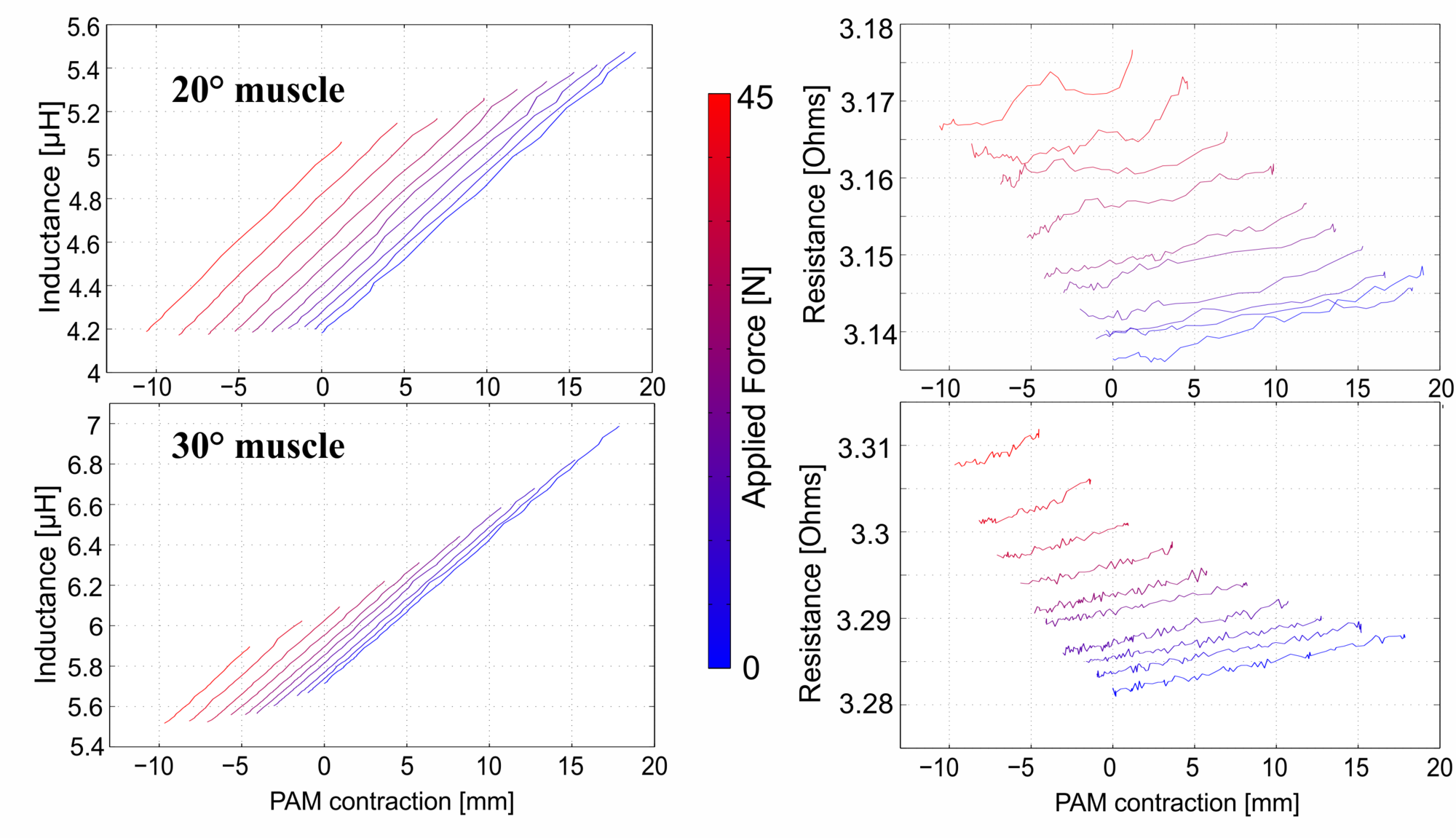
Figure 2
